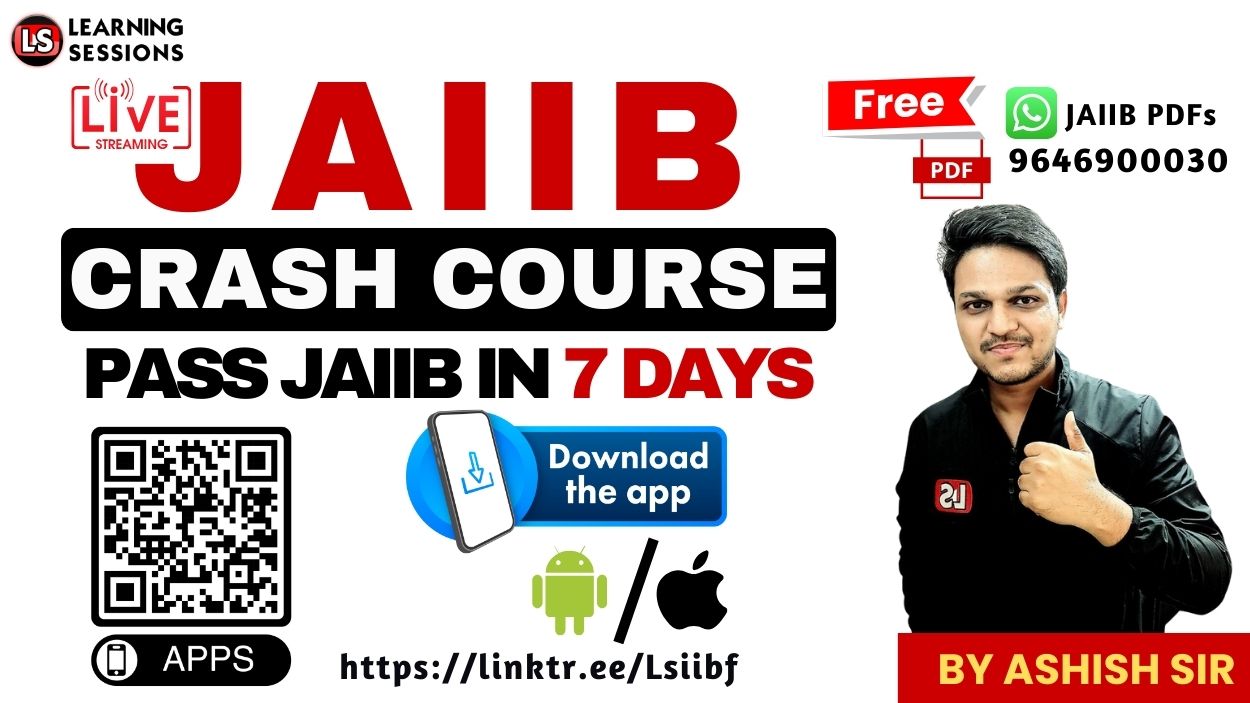Ever wondered why banks ask for so many documents while opening an account? Or why certain customers need to go through strict verification while others don’t? If these questions have crossed your mind, you’re not alone!
In today’s session, we’ll dive deep into Chapter 2 of the KYC AML CFT module, covering three critical topics:
- ✅ Customer Identification Procedures
- ✅ Beneficial Ownership
- ✅ Risk Management & Categorization
This topic is crucial for bankers preparing for JAIIB, CCP, or KYC AML certifications. Whether you’re working in account opening, compliance, or risk, this content will strengthen your fundamentals and help you handle real-world banking scenarios confidently.
👉 So don’t skip a second! Watch the video till the end, share your thoughts in the comments, and let us know how else we can support your exam journey.
🎥 👉 Before we dive in, watch this video for a complete breakdown:
🧠 What is Customer Identification & Why is it Important? (00:00 – 01:44)
KYC = Know Your Customer. The goal is to identify and verify customers to prevent financial crimes. Covered entities include:
- Individuals
- HUFs
- Companies
- Partnerships
- Trusts & NGOs
- Government bodies & agents
👤 Who is a Beneficial Owner? (01:44 – 04:11)
A beneficial owner is the person who ultimately owns or controls the entity. Identification thresholds:
- Companies: 25%+ shareholding
- Partnerships: 15%+ capital share
- Trusts: 15%+ beneficial interest
- AOPs: 15%+ share in profit/property
📝 How to Verify a Customer’s Identity? (04:11 – 06:00)
- PAN Card, Aadhaar, Passport
- GST Certificate, MSME proof
- Income proof: ITR, salary slips
- Transaction pattern monitoring
🔄 When Should KYC Be Done? (06:00 – 08:24)
KYC is mandatory in:
- Account opening
- Walk-in financial transactions
- Suspicious or fraudulent cases
- Sale of insurance, mutual funds, prepaid cards above ₹500
- Cross-border transactions (regardless of amount)
📄 Documents Required for KYC (08:24 – 12:42)
Depending on the entity type:
- Individuals: PAN, Aadhaar, photo, address proof
- Companies: Incorporation Certificate, MOA, GSTIN
- Trusts: Trust deed, trustee list, PAN
- Foreign Nationals: Passport, visa, embassy letter
- Minors: Guardian KYC + Birth Certificate
⚖️ Relaxed KYC Norms & Risk Categorization (12:42 – 15:44)
- One OVD for entire family allowed
- Existing KYC can be reused for other accounts
- Self-declaration accepted for address change
- Third-party verification for NRIs
🔍 Customer Risk Scoring & Monitoring (15:44 – 19:49)
Risk scoring is based on:
- Customer profile (income, location, industry)
- Product used
- Delivery channel
- Transaction patterns
🚦 Product & Delivery Channel Risk (19:49 – 23:19)
- Low Risk: FD, salary accounts, home loans
- Medium Risk: Credit cards, demand loans
- High Risk: OD, CC, crypto, prepaid wallets
[FREE EPDF] ORGANIZATION STRUCTURE IN INDIA | Chapter 7 | KYC AML
✅ Customer Due Diligence (CDD) Types (23:19 – 26:49)
- Simplified: Low-risk (minimal docs, transaction limit)
- Standard: Medium-risk
- Enhanced: High-risk (PEPs, NRIs, high-cash clients)
🛑 Screening & Field Verification (26:49 – 29:06)
- FATF, UN, RBI, FIU watchlists
- Home/office visit, digital verification
🔁 Periodic KYC Updates (29:06 – 35:34)
| Risk Level | Update Frequency |
|---|---|
| High | Every 2 years |
| Medium | Every 8 years |
| Low | Every 10 years |
Also update KYC when:
- Dormant accounts get active
- Customer becomes PEP
- STRs are filed or suspicious activity is found
🧾 PAN Submission & Non-Compliance (35:34 – 39:50)
PAN or Form 60 is mandatory. Refusal = Account suspension or closure.
Exceptions allowed only with proper monitoring (medical/old-age reasons).
📥 Download PDF Notes
Want to revise this content offline?
👉 Click here to download the complete PDF of Chapter 2
🎯 Conclusion
We’ve covered the entire spectrum of KYC Chapter 2 — from identifying customers and beneficial owners to assigning risk scores and performing due diligence.
Key Takeaway: KYC is about more than documents — it’s about protecting the integrity of our banking system.
💡 Bookmark this post for revision. Drop your questions in the comments below and let us know your thoughts!
🔔 Don’t forget to subscribe to our channel, explore our Combo Pack, and check out our mobile app for more updates.
Also Like:







